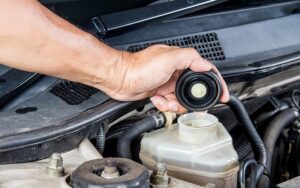During winter, motorbike owners often face difficulty starting their bikes in subfreezing temperatures. Cold weather impacts both living beings and machines, causing potential issues for motorcycles due to changes in internal components.
Potential Issues In Freeze-Frosted Conditions
Motorbikes, while seeming fine, are vulnerable to cold weather. Unlubricated wires and chains may break when stiff. Careful handling and frequent checks are essential. The battery loses power in freezing temperatures due to reduced winter usage, leading to a parasitic drain. Cold thickens engine oil, making starting difficult; using lighter oil in winter is recommended.
Cold-Starting Methods For Motorbikes
When faced with below-freezing conditions, following these methods can help start a motorbike successfully:
- Ensure A Fully Charged Battery: Cold weather accelerates battery drain. Check the battery; the bike won’t start if it’s dead. Charge the battery to at least 50% for a successful start.
- Activate The Choke: Turn on the choke to restrict airflow and improve the fuel-to-air ratio. This provides the necessary fuel thrust for starting the engine.
- Allow Fuel Feed: Turn on the fuel knob and let the fuel enter the motor, lubricating the engine.
- Transport Your Bike: Shifting the bike slightly prevents fluids from settling at the bottom, helping grease the gears and reducing fuel usage for starting.
- Turn The Engine On: Kickstart the bike to create a spark, facilitating battery recharge and maintaining engine functionality.
- Get Your Bike Warm: Allow the engine to warm up to the operating temperature for smooth operation and to prevent long-term damage.
- Fit For The Journey: Once the engine warms up, ride slowly initially, ensuring your bike insurance policy is effective before hitting the road.
Winter Bike Maintenance Tips
Winter riding requires careful planning due to potential hazards from severe weather.
Consider The Following Maintenance Tips:
- Replace Tyres: Use more durable, winter-appropriate tyres to prevent punctures.
- Adjust Tyre Pressure: Choose tire pressure based on the local climate for better traction and a comfortable ride.
- Regular Cleaning And Waxing: Protect the bike’s frame from deterioration by cleaning and waxing it regularly.
The Role Of Insurance In Bike Security
Just as maintaining a bike is crucial for safety, having bike insurance is equally important. Regular repairs and maintenance keep the bike in good condition, while a comprehensive bike insurance policy protects against unintentional damage or loss.
- Third-Party Insurance: Mandatory by law in many places, it covers third-party liabilities in case of property damage or harm caused by your bike. Claims are subject to terms and conditions set forth under the motor insurance policy.*
- Comprehensive Bike Insurance: Covers own damage, total loss, and third-party liability. It includes protection from theft, man-made disasters, and natural disasters. Claims are subject to terms and conditions set forth under the motor insurance policy.
When renewing your bike insurance policy, it’s essential to consider coverage limits, deductibles, and additional benefits to determine the optimal bike insurance premium for your needs.
Make sure you compare bike insurance online before choosing a policy. Comprehensive bike insurance offers worry-free winter riding, protecting your investment and ensuring you can enjoy the winter scenery without concerns. Make sure that you carry out the bike insurance renewal process on time.
*Standard T&C Apply
Disclaimer: The content on this page is generic and shared only for informational and explanatory purposes. It is based on several secondary sources on the internet and is subject to changes. Please consult an expert before making any related decisions.
Insurance is the subject matter of solicitation. For more details on benefits, exclusions, limitations, terms, and conditions, please read the sales brochure/policy wording carefully before concluding a sale.



